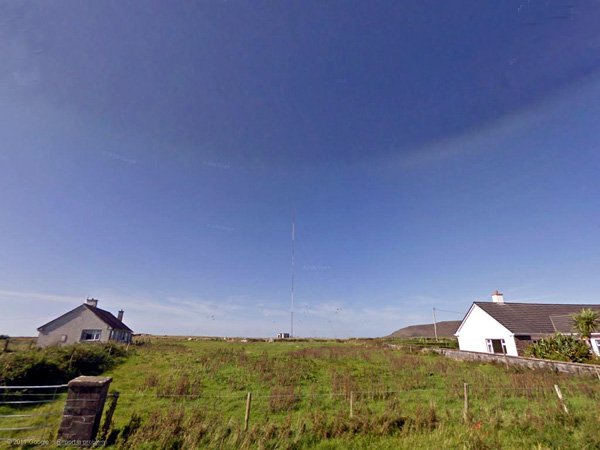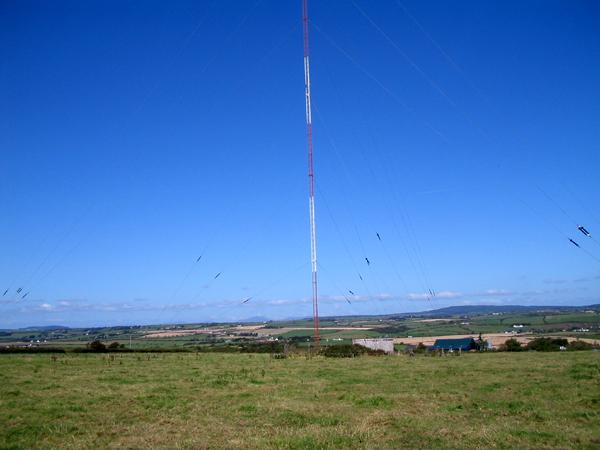 |
| Overall view of the unused tower at Youghal as of
September 10, 2009. It's either an Eve or Balfour Beatty 300' lattice mast
probably standing on a Balfour Beatty base insulator. (Decca did not always
use Austin bases.) This type mast was used on many the UK sites and was
the same as those in Spain, the Persian Gulf and India. |
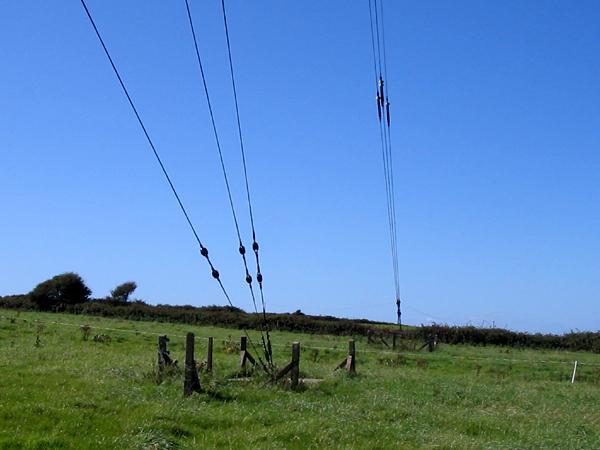 |
| Guy wire anchor points. The main guy insulators look like
Austin A-4006 or A-5008 insulators while the egg insulators were made by
Allied Insulators in England. John Molloy-Vickers indicates that
"the eggs were usually strapped across as otherwise they would have a tendency
to flashover which could interfere with the locking signal from Master.
However they were useful if the main insulator shorted out in which case
the station could be worked at very reduced power by removing the link
across the egg but this entailed some fiddling with the tuning. Also the
faulty main insulator could be found by removing the links in turn etc. |
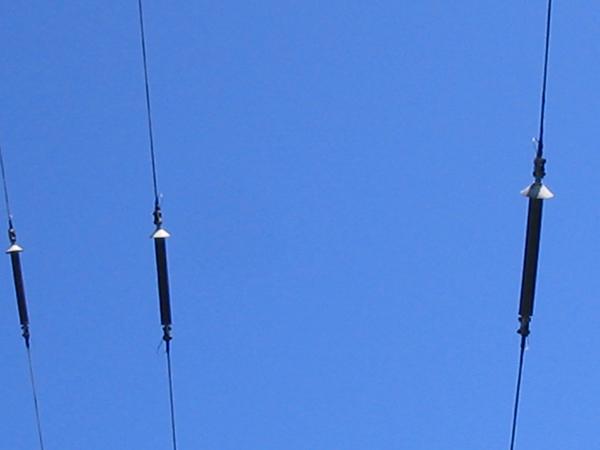 |
| Guy wire insulator detail. |
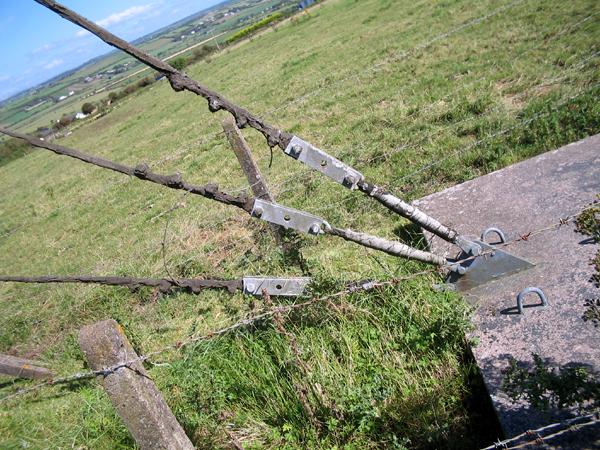 |
| Guy wire anchor detail. It was wrapped with Denso protective
wrap. |
 |
| Coil house entrance. |
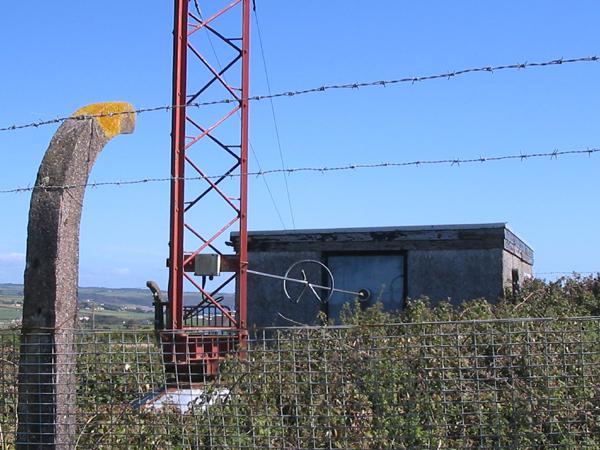 |
| Lead-out tube detail showing how it connects
to the mast. The twist in the lead-in pipe had a reason foe being there.
It could be regarded as an inductive loop and hopefully preventing a lightning
current surge from flowing into the coil hut and destroying the coils The
loop would thus encourage the main strike to flash across the spark gap
across the base insulator rather than the one inside the hut. |


